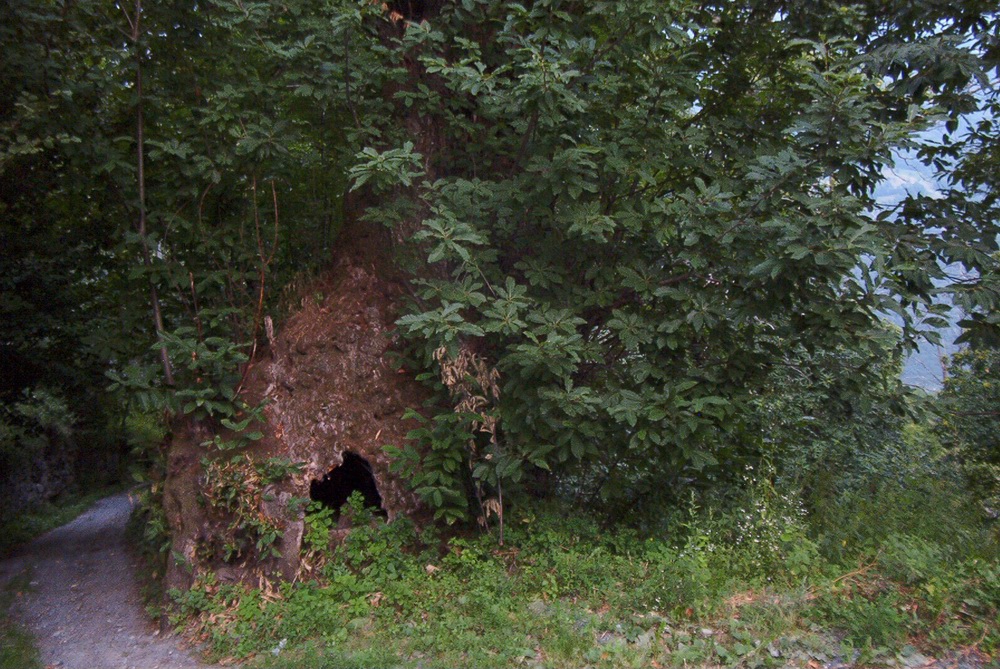
Bedognolo Chestnut Tree
This post is also available in:
 Italiano (Italian)
Italiano (Italian)
Castanea sativa (Fagaceae)
Along the mule track that connects Ravoledo to Fusino, there’s what, at first glance, looks like a simple rock formation, but when near, it appears as a monumental chestnut tree with the largest trunk in the entire province of Sondrio – its circumference reaches almost 40 ft.
Upon close observation, It’s quite obvious that the tree phytosanitary conditions are critical: any heavy snow could easily seal its fate, although the big specimen continues to grow every year.
The trunk has a huge cavity at the base, that has developed due to a fire in an attempt to knock it down some time ago. This specimen is included in the provincial census for its bearing, shape, the historical, and the landscape value.
How to get there:
Simply follow the mule track from Ravoledo to Fusino.
Botanical Card
The common chestnut is widely spread throughout Southern Europe, boosted, in the ancient centuries, by human cultivation for its nutritious fruits. This species is moderately heliophilous and suffers from late frosts. It grows well in the presence of a sub-oceanic climate, while it tends to avoid continental environments. It prefers loose, fresh soils, rich in nutrients such as potassium and phosphorus, with an acidic or subacid reaction.
The typical chestnut tree grows at between 656 ft and 2.700 ft above sea level in the Alps, while it tends to reach higher altitudes, 3.280-4.265 ft, in the southern Apennines. This species is mainly cultivated for its fruits, while the tannin in its bark is used for hides. Chestnut trees are also appreciated as an excellent firewood.
Photo source: http://www.paesidivaltellina.it/natura/index1.htm
This post is also available in:
 Italiano (Italian)
Italiano (Italian)
Contatti
23033 Grosio(SO)
